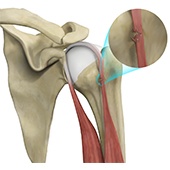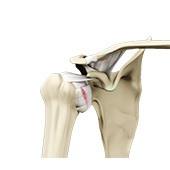- Anatomy
- Conditions
- Procedures
Clavicle Fracture
The break or fracture of the clavicle (collarbone) is a common sports injury associated with contact sports such as football and martial arts, as well as impact sports such as motor racing. A direct blow over the shoulder that may occur during a fall on an outstretched arm or a motor vehicle accident may cause the clavicle bone to break.
Shoulder Pain
Pain in the shoulder may suggest an injury, which is more common in athletes participating in sports such as swimming, tennis, pitching, and weightlifting. The injuries are caused due to the over usage or repetitive motion of the arms.In addition to pain, shoulder injuries also cause stiffness, restricted movements, difficulty in performing routine activities and popping sensation.
Shoulder Fracture
A break in a bone that makes up the shoulder joint is called a shoulder fracture.
Frozen Shoulder
Frozen shoulder, also called adhesive capsulitis, is a condition in which you experience pain and stiffness in your shoulder. The symptoms appear slowly, worsen gradually and usually take one to three years to resolve on their own.
Shoulder Dislocation
Sports that involve overhead movements and repeated use of the shoulder at your workplace may lead to sliding of the upper arm bone from the glenoid. The dislocation might be a partial dislocation (subluxation) or a complete dislocation causing pain and shoulder joint instability. The shoulder joint often dislocates in the forward direction (anterior instability), and sometimes in the backward or downward direction.
Biceps Tendon Rupture
The biceps muscle is located in the front side of your upper arm and functions to help you bend and rotate your arm. The biceps tendon is a tough band of connective fibrous tissue that attaches your biceps muscle to the bones in your shoulder on one side and the elbow on the other side.
SLAP Tears
The term SLAP (superior –labrum anterior-posterior) lesion or SLAP tear refers to an injury of the superior labrum of the shoulder.
Shoulder Labral Tear
Traumatic injury to the shoulder or overuse of the shoulder (throwing, weightlifting) may cause the labrum to tear. In addition, aging may weaken the labrum leading to injury.
Shoulder Ligament Injuries
Shoulder ligament injuries are injuries to the tough elastic tissues present around the shoulder that connect bones to each other and stabilize the joint. The ligaments present in the shoulder are connected to the ends of the scapula, humerus, and clavicle bones which form the shoulder complex. The extensive stretching or tearing of these ligaments from acute or chronic injuries can lead to instability in the shoulder joint.
Internal Impingement of the Shoulder
Internal shoulder impingement can be described as a pathological condition resulting from repetitive impingement of the internal surface of the rotator cuff by the bones at the back of the glenohumeral joint.
Multidirectional Instability of the Shoulder
The shoulder consists of a ball and socket joint where the rounded end of the humerus (upper arm bone) fits into a socket (glenoid cavity) formed by the shoulder blade. The joint is stabilized by the surrounding capsule, ligaments, and tendons of the rotator cuff muscles. Shoulder instability results when the humerus is not held firmly within the socket and moves away from the glenoid cavity.
Shoulder Instability
Shoulder instability is a chronic condition that causes frequent dislocation of the shoulder joint.

 512-328-2663
512-328-2663












